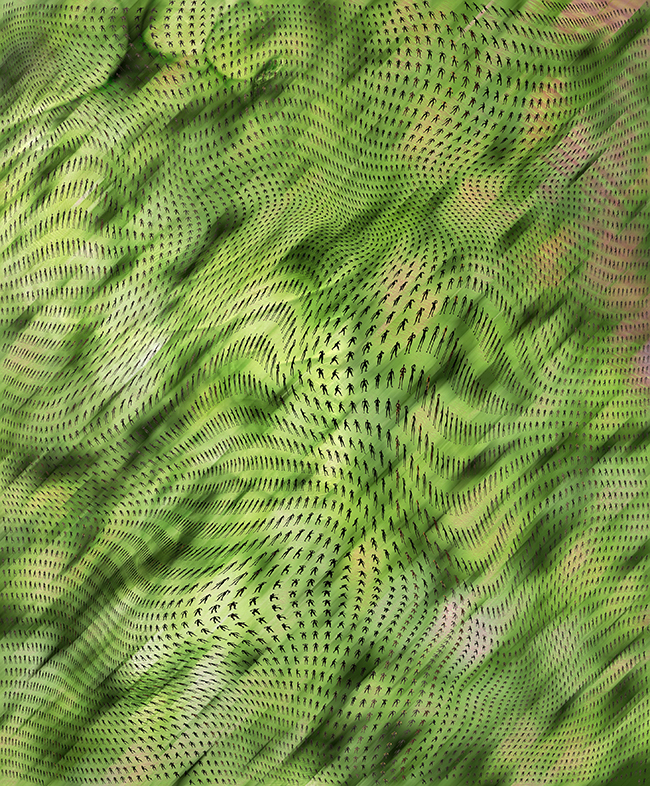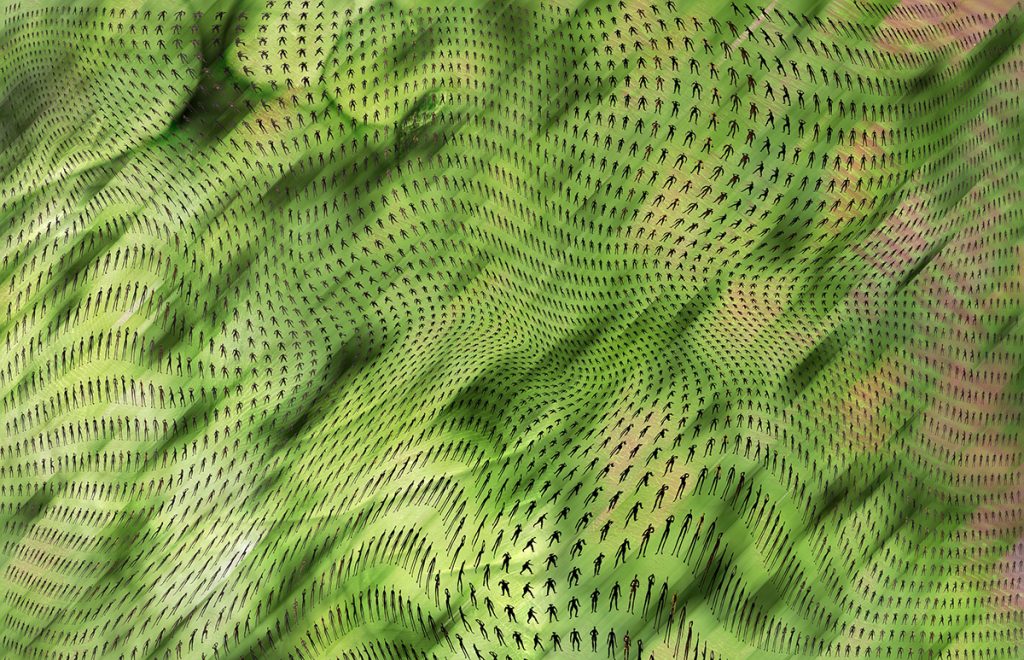Vicky Tsalamata, an Athens-based artist, carries her sharp wit into every work she creates. Her art mirrors the ironic wisdom of Balzac’s La Comédie Humaine, a cycle of humanity in all its glory and failure. Through her work, she levels a sarcastic but insightful lens on the human condition, balancing the ancient and the contemporary, asking viewers to measure their worth within the currents of history.
Beyond her artistic practice, Tsalamata is also a Professor Emeritus in Printmaking at the Athens School of Fine Arts, a role that underscores her technical knowledge and intellectual rigor. Her works often emerge from complex processes of mixed media and intaglio, with archival prints on 100% cotton Photo Rag Hahnemuehle paper as her foundation. Each piece feels like a dialogue between permanence and transience. In her hands, technique is never a distraction from meaning—it is the bedrock of her vision.

Impulse, touching the world of speed
Impulse belongs to Tsalamata’s broader Momentum project, which began with her participation in the Krakow International Triennial. The central idea was to engage with the theme of “Momentum,” not simply as a scientific term but as a metaphor for how modern life rushes forward. Her contribution, Impulse, sets itself within this current, binding art, philosophy, and lived experience into one expression.
The work takes as its starting point the ancient observation that “everything flows, nothing stays the same.” Tsalamata seizes on this timeless thought and overlays it with the realities of our contemporary age, an era where speed dominates. Life in the modern world is not just in motion—it is accelerated, impetuous, and often overwhelming. Impulse stands at the meeting point of that eternal flow of time and the hurried beat of human existence.
She builds her concept on a triad of interconnected ideas: flow, speed, and impulse. Flow suggests continuity, the endless river of time and experience. Speed points to the pace of our lives today, where technology and human ambition push us forward at relentless velocity. Impulse is the spark—the initial force that sets movement in play. Together, they form the equation of momentum. Tsalamata treats this not as a scientific formula but as a way of thinking about human action, will, and awareness.
Impulse, in its most basic sense, is the act of being set into motion. But Tsalamata pushes further. For her, impulse is more than mechanics; it is temperament, emotion, desire—forces rising from within that push a person to act. This inner charge meets the outer current of the world, and the result is momentum: a life lived in perpetual acceleration, sometimes conscious, often unconscious.
The work uses mixed media and intaglio, a deliberate choice. Intaglio, with its deep incisions and careful layers, echoes permanence and the weight of history. Mixed media introduces variability, texture, and surprise—qualities that resemble the unpredictability of life’s impulses. When these techniques combine on archival paper, the result is both stable and volatile, echoing the duality at the heart of her theme.
The visual language of Impulse hints at motion without resorting to literal depictions of speed. Instead of racing figures or blurs of movement, Tsalamata suggests velocity through rhythm, layering, and the shifting tension between elements. There is a sense of time stretching and collapsing, of continuity broken by sudden surges. This tension embodies the paradox she wants to express: the eternal flow of time versus the restless drive of human urgency.
At its core, Impulse is also about awareness. To acknowledge impulse is to step back and see what propels us forward—whether personal desire, social expectation, or historical necessity. Tsalamata invites us to ask: what drives my movement? Is my momentum my own, or am I carried along by forces larger than me? This reflection brings philosophical depth to her piece, grounding its formal elegance in questions of existence.
Placed within the larger context of the Momentum project, Impulse becomes a chapter in a broader meditation on life’s pace. While each piece within the project addresses different facets of the theme, Impulse captures the very beginning—the spark, the decision, the emotional nudge that sets motion into being. It is both intimate and universal, reminding us that the grand currents of history often begin in small, almost invisible impulses.
By merging technique, philosophy, and lived experience, Tsalamata produces more than an image. She constructs a framework for thought. In Impulse, speed and flow are not just visual ideas but existential conditions. And through her work, she shows how art can mirror the ceaseless rhythm of time, even as it asks us to pause and consider the forces propelling us forward.

